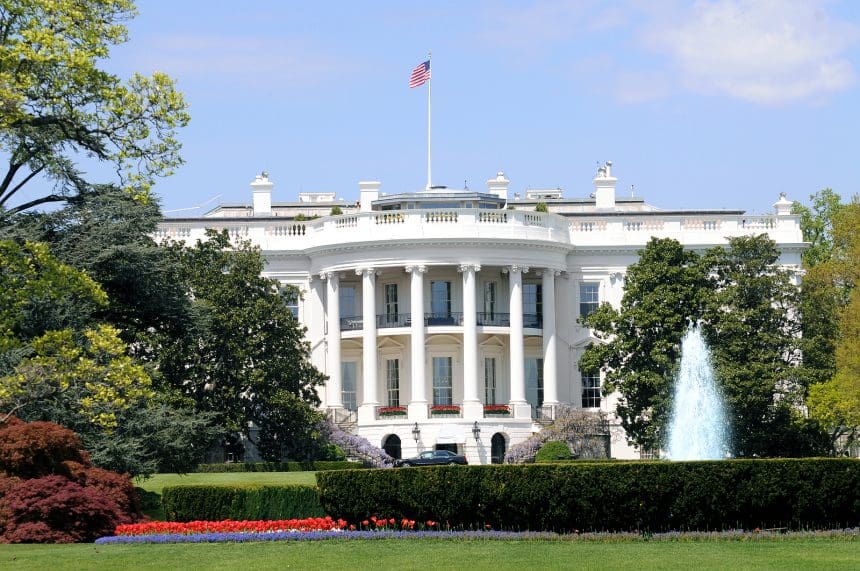Forging a New Atlantic Alliance: What the Landmark US-EU Trade Deal Means for America and St. Louis
ST. LOUIS, MO (STL.News) US-EU Trade Deal – In the complex world of global economics, few relationships are as significant as the one between the United States and the European Union. Together, they represent nearly half of the world’s GDP and form the largest economic partnership on the planet. For years, this relationship has been a mix of deep cooperation and periodic friction. However, recent developments are steering this partnership into a new era, moving beyond isolated disputes towards a comprehensive strategic alliance. This evolving US-EU trade framework isn’t a single, signed, on-the-dotted-line treaty, but rather a series of crucial agreements and ongoing dialogues that shape the future of transatlantic commerce. For businesses and consumers across the USA, and right here in the St. Louis region, the implications are profound.
This article will break down the key components of current US-EU trade developments, explain their implications for the United States as a whole, and connect the dots to our local economy in Missouri.
US-EU Trade Deal – Demystifying the “Deal”: More Than Just a Treaty
First, it’s essential to understand that what is often referred to as the “US-EU trade deal” is not a singular document like the USMCA (United States-Mexico-Canada Agreement). Instead, it’s a multi-faceted approach centered around the US-EU Trade and Technology Council (TTC). Launched in 2021, the TTC acts as the primary forum for the U.S. and EU to coordinate on key global trade, economic, and technology issues.
The goal is twofold: first, to resolve long-standing trade irritants, and second, to proactively set global standards for the 21st-century economy. This collaborative framework marks a significant shift away from the tariff-heavy disputes of the late 2010s towards a partnership aimed at tackling shared challenges, from climate change to securing critical supply chains.
Several key breakthroughs have already been achieved under this new cooperative spirit:
- The Airbus-Boeing Truce: The nearly two-decade-long dispute over subsidies to aircraft manufacturers Airbus and Boeing, which resulted in billions of dollars in retaliatory tariffs, has been suspended. This de-escalation provides stability for one of the most vital transatlantic industries.
- Steel and Aluminum Tariff Resolution: The contentious “Section 232” tariffs on EU steel and aluminum have been replaced by a tariff-rate quota system. More importantly, both sides are now negotiating a first-of-its-kind Global Arrangement on Sustainable Steel and Aluminum. This aims to restrict access for non-market, carbon-intensive steel (primarily targeting China) while promoting trade in “green” steel produced with lower emissions.
- Critical Minerals Agreement: With the global rush towards electric vehicles (EVs) and renewable energy, securing a stable supply of minerals like lithium, cobalt, and nickel is a national security imperative. The US and EU are negotiating an agreement to strengthen these supply chains, making it easier for EU-sourced minerals to qualify for U.S. clean energy tax credits under the Inflation Reduction Act (IRA).
US-EU Trade Deal – What This Renewed Partnership Means for the USA
The impact of this revitalized trade relationship extends across the American economy, promising significant benefits in several key areas.
1. Enhanced Economic Growth and Job Creation
At its core, the US-EU framework is designed to reduce barriers to trade. Lower tariffs and aligned regulations mean American companies can sell their goods and services to the massive EU market of 450 million consumers more easily and at a lower cost. This directly translates to increased exports, which support jobs in manufacturing, agriculture, and the service sector. By harmonizing standards across various sectors, including artificial intelligence and medical devices, the U.S. and EU are streamlining the costly and time-consuming process of obtaining product approvals on both sides of the Atlantic. This efficiency boost makes American businesses more competitive globally.
2. Lower Costs and More Choices for Consumers
Trade is a two-way street. Just as American companies benefit from access to the European market, American consumers benefit from access to European goods. The suspension of tariffs on products like French wine, Italian cheese, and German machinery means lower prices for shoppers and businesses. A more integrated market also fosters competition, which drives innovation and provides consumers with a wider array of high-quality products to choose from, whether it’s a German automobile or a Belgian chocolate.
3. Strengthening Supply Chain Resilience
The COVID-19 pandemic and recent geopolitical instability laid bare the vulnerabilities of long, complex supply chains. The US-EU agreements on critical minerals and sustainable steel are direct responses to this challenge. By “friend-shoring”—that is, reorienting supply chains to rely on allies and trusted partners—the U.S. reduces its dependence on strategic rivals for essential materials. This collaboration ensures that the components needed for everything from F-35 fighter jets to Ford’s next-generation EVs are sourced from stable, reliable partners.
4. Setting the Global Rules for the Future
Perhaps the most significant long-term impact is in the realm of technology and standards. The TTC is actively working on creating a common approach to artificial intelligence (AI) governance, data privacy, and cybersecurity. By establishing a unified democratic bloc on these issues, the U.S. and EU can set the global “rules of the road.” This prevents an alternative model, often promoted by authoritarian states, from becoming the worldwide standard. For the U.S., leading this charge ensures that the future digital economy is built on principles of openness, transparency, and respect for individual rights.
US-EU Trade Deal – The View from St. Louis: How Transatlantic Trade Impacts Our Region
While these developments unfold on the international stage, their effects are felt directly in the St. Louis metropolitan area. Missouri’s economy is deeply intertwined with global trade, and the EU is one of its largest trading partners.
Aerospace and Advanced Manufacturing: The truce in the Boeing-Airbus dispute is a monumental victory for the St. Louis region, home to Boeing’s Defense, Space & Security division and a major manufacturing hub. A stable, tariff-free environment fosters a healthier supply chain for the thousands of smaller manufacturing firms in Missouri and Illinois that supply parts to the aerospace giant. Furthermore, as the U.S. and EU collaborate on sustainable aviation fuels and green technology, St. Louis-based research and manufacturing are well-positioned to lead.
Agribusiness and Biotechnology: Missouri is a leading agricultural powerhouse, and the St. Louis region is a global leader in ag-tech and plant science, with institutions such as the Danforth Plant Science Center and companies like Bayer. For decades, one of the biggest hurdles in US-EU trade has been differing standards on genetically modified organisms (GMOs) and agricultural practices. The ongoing dialogue within the TTC provides the best opportunity in years to find common ground. A breakthrough that harmonizes regulations or creates pathways for mutual recognition could unlock immense new markets for Missouri’s corn, soybeans, and innovative ag-tech solutions.
Life Sciences and Healthcare: The St. Louis region’s burgeoning life sciences sector, powered by Washington University School of Medicine and BJC HealthCare, stands to gain from closer regulatory cooperation. Aligning standards for pharmaceuticals and medical devices through the TTC can streamline the approval process, enabling innovative treatments and technologies developed in Europe to reach patients more quickly, and vice versa. This collaboration accelerates medical progress and creates high-skilled jobs.
Logistics and Distribution: As a central hub for river, rail, and road transport, St. Louis plays a vital role in the nation’s logistics network. Smoother transatlantic trade means more goods flowing through the region. Increased imports from Europe destined for the Midwest and increased exports from local manufacturers headed to EU ports both rely on the efficient logistics infrastructure that is a cornerstone of the St. Louis economy.
The Road Ahead After the US-EU Trade Deal
Challenges certainly remain. Fully resolving agricultural differences will be a difficult negotiation, and the political landscapes in both the U.S. and across the 27 EU member states are constantly shifting. However, the current trajectory is clear: the U.S. and EU are moving from being passive partners to active allies.
This strategic pivot is more than just an economic policy; it’s a recognition that in an increasingly fractured world, shared democratic values are a powerful foundation for shared prosperity and security. For the nation and for St. Louis, this renewed transatlantic partnership offers a pathway to a more stable, innovative, and prosperous future.
Copyright © 2025 – St. Louis Media, LLC. All rights reserved. This material may not be published, broadcast, or redistributed. It may have been written in part with either Gemini or ChatGPT AI programs. This article was produced in part using Gemini.
For the latest news and video, head to STL.News.











